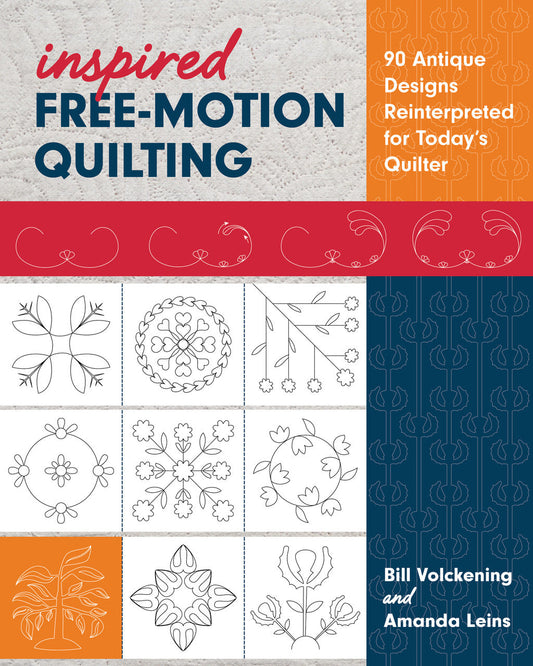
From Home Machine to High-End Look: 10 Must-Know Bag-Making Tips
Share
Hi friends! I’m Jess from Sallie Tomato, and I’m thrilled to share some of my top tips for creating boutique-style bags on your domestic sewing machine. Whether you’re new to bag making or looking to refine your skills, my goal is to help make your sewing journey both fun and rewarding!
A Little About Me
My sewing journey began at age 5, and even then I knew I wanted a creative career. While studying entrepreneurship in college, I wrote my first sewing pattern—and I was hooked! That pattern sparked a passion for bag design and a determination to develop techniques and source high-quality materials that would allow anyone to make professional-looking bags at home.
Years later, Sallie Tomato has grown into the business of my dreams, and I’m so grateful to share what I’ve learned with this amazing community of makers.
Top 10 Tips
Creating boutique-style bags doesn’t require industrial equipment or a professional studio. With the right techniques and basic tools, your domestic sewing machine can be your best ally in crafting stunning, high-quality bags. Here are a few tips to help you get started:
1. Choose the Right Materials: The key to a professional-looking bag lies in the materials you use. High-quality fabrics, interfacing, zippers, and hardware make all the difference. I love working with cork fabric and faux leather because they are both durable, easy to sew with a Teflon foot, and can add a luxurious feel to any project.
2. Master the Basics: Before diving into complex designs, make sure you’ve mastered the basics. Practice straight stitching, topstitching, sewing curves on scraps of fabric, and using beginner-friendly patterns. It can be tempting to use a pattern that’s more advanced, but it’s important to establish foundational skills and understand basic bag-making techniques before moving onto more complex designs.
3. Use the Right Needles and Thread: Depending on the materials you’re working with, choose needles and thread that can handle the weight and texture of the fabric. For example, when working with thicker materials like cork or vinyl, use a heavy-duty needle and strong, polyester thread to avoid breakage and ensure durability. Check out my book, Essential Bag Making Reference Tool, which is loaded with tips and suggestions for working with various types of fabric.
4. Slow and Steady Wins the Race: When sewing through thick layers, take your time. Sewing too quickly can result in uneven stitches or broken needles. Don’t hesitate to use the hand wheel for tricky sections to maintain control.
5. Press for Success: Pressing your seams as you sew is crucial for a polished finish. Use a pressing cloth to avoid damaging delicate materials, and press from the wrong side to keep the fabric looking fresh.
6. Stabilize for Structure: To give your bag a professional, boutique-style structure, use interfacing and stabilizers. These materials help your bag hold its shape and give it a more polished look. Depending on your project, you can choose from fusible fleece, foam stabilizers, or even multiple layers of interfacing. It’s important to trim interfacing from the seam allowances during construction to reduce bulk and help avoid sewing through thick seams during the final assembly.
7. Create Stylish Straps with Webbing: Using decorative webbing for bag straps and handles is a simple yet effective way to achieve a boutique-style finish. Webbing adds durability and strength, while providing a designer aesthetic.
8. Enhance & Reinforce Bags with Hardware: Incorporating hardware into your bag designs can instantly transform a simple bag into a high-end, custom creation. Hardware such as zippers, locks, buckles, and rivets not only enhance the durability and usability of a bag but also serve as a stylish detail that can complement and complete your design.
9. Finish Raw Edges with Edge Paint: Edge paint seals and protects raw edges, preventing fraying and enhancing durability, which is essential for maintaining the bag's structure over time. Available in various colors, edge paint adds a subtle yet sophisticated detail that can complement your fabric choices.
10. Mix Materials: Combining cotton fabrics with nonwoven materials, such as cork or faux leather, adds texture, durability, and a luxurious feel. This contrast not only creates visual interest but also provides structure, ensuring your bag maintains its shape and reflects high-quality craftsmanship. A simple way to incorporate nonwoven materials is to sew your bag from cotton and create the strap from a nonwoven fabric.
Want to Take Your Bag-Making Further?
If you’re ready to explore every corner of the bag-making world, my new book, Essential Bag Making Reference Tool, is your ultimate guide!
This compact, easy-to-use reference is packed with expert tips and clear instructions for choosing fabrics, working with hardware and zippers, and mastering construction for all types of bags—from duffels and clutches to backpacks and slings. It’s your quick, go-anywhere encyclopedia for creative bag-making success.
Whether you’re sewing for fun or building your own bag line, this tool will help turn your ideas into beautifully crafted, one-of-a-kind creations.
…
This blog post is written by Jess from Sallie Tomato
Jessica Barrera is the founder of Sallie Tomato, a popular pattern line and online shop for bag-making supplies and fabric. Jessica is an author, teacher, and lifelong member of the sewing industry. She lives in Fox Lake, Wisconsin. sallietomato.com











